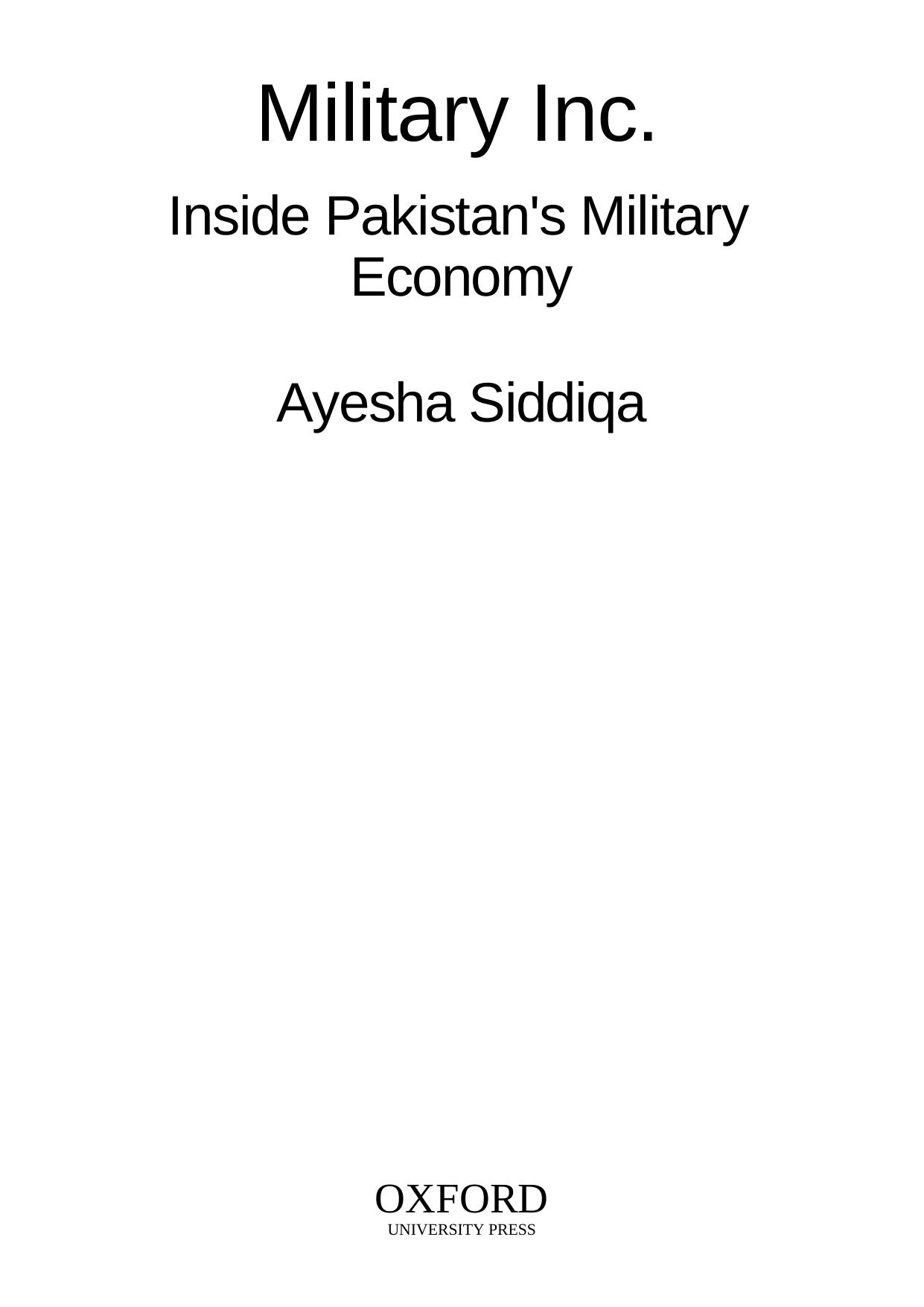Military Inc.: Inside Pakistan's Military Economy by Ayesha Siddiqa

Author:Ayesha Siddiqa [Siddiqa, Ayesha]
Language: eng
Format: epub, pdf
Publisher: Pluto Press
Published: 2007-04-19T23:00:00+00:00
Source: NLC HQs Report.
The company also built wheat storage centres, a task that was part of its original mandate. Its stated profit from 1990–1 to 1999–2000 was approximately Rs.954.9 million (US$16.46 million).16 One former army chief, Mirza Aslam Beg, claimed that these profits are evidence of the NLC’s efficiency. The general was of the view that the NLC and the FWO are not part of the military, but because they are manned by military personnel and do not have a civilian character, they are far more productive than private-sector organizations.17 However, the NLC’s supposed profitability is not necessarily a result of greater efficiency: it is linked with its ability to capitalize on its association with the army to get government contracts and to push out its private-sector competitors. The NLC enjoys greater advantage in securing contracts than any other private or public-sector transport company. Its connection with the army has cushioned it from overall competition in the market. For instance, the land provided for its sites in various parts of the country is state land, a facility that gives it a major advantage over private-sector organizations. NLC vehicles also do not face the checks and controls that an ordinary transportation company is likely to encounter at the hands of customs, police and other authorities. The private-sector transporters have to carry the cost of corruption by these officials, and the NLC does not.
Under Zia, the defence forces also began to expand their financial power for the benefit of their members, especially the senior echelons. It must be reiterated that the military’s economic empire underwent a vertical and horizontal expansion commensurate with its political power. This expansion manifested itself in three forms. First, the regime granted greater benefits to individual members of the fraternity, rewarding them with rural and urban land. Second, as mentioned earlier, numerous cooperative ventures were started to establish the military’s financial independence. Third, the subsidiaries were allowed to expand their business operations at the risk of penetrating most segments of the economy and the society. The establishment of two other welfare foundations, one by the Pakistan Air Force (PAF) (the Shaheen Foundation, SF) and the other by the PN (the Bahria Foundation, BF) represented part of the horizontal expansion.
The SF was created in 1977.18 It was established on the same principles as the AWT: that is, using pension funds for investment in business and industrial projects. Apparently, the PAF’s high command wanted to create greater welfare opportunities for its members. The service had a small share of the welfare resources and jobs in the FF, and its 5 per cent share in FF projects was not considered sufficient to accommodate ex-PAF personnel or provide welfare facilities. However, the expansion replicated the inter-services rivalry that could be observed in the distribution of the defence budget between the three services, and in arms procurement (see Figure 6.1).
The PAF’s example was soon followed by the PN, which lost no time in establishing the BF in January 1982.19 There was no justification for the navy’s independent set-up other than inter-services competition.
Download
Military Inc.: Inside Pakistan's Military Economy by Ayesha Siddiqa.pdf
This site does not store any files on its server. We only index and link to content provided by other sites. Please contact the content providers to delete copyright contents if any and email us, we'll remove relevant links or contents immediately.
The Secret History by Donna Tartt(18846)
The Social Justice Warrior Handbook by Lisa De Pasquale(12141)
Thirteen Reasons Why by Jay Asher(8796)
This Is How You Lose Her by Junot Diaz(6794)
Weapons of Math Destruction by Cathy O'Neil(6146)
Zero to One by Peter Thiel(5686)
Beartown by Fredrik Backman(5599)
The Myth of the Strong Leader by Archie Brown(5425)
The Fire Next Time by James Baldwin(5249)
How Democracies Die by Steven Levitsky & Daniel Ziblatt(5128)
Promise Me, Dad by Joe Biden(5087)
Stone's Rules by Roger Stone(5026)
A Higher Loyalty: Truth, Lies, and Leadership by James Comey(4845)
100 Deadly Skills by Clint Emerson(4840)
Rise and Kill First by Ronen Bergman(4704)
Secrecy World by Jake Bernstein(4646)
The David Icke Guide to the Global Conspiracy (and how to end it) by David Icke(4625)
The Farm by Tom Rob Smith(4437)
The Doomsday Machine by Daniel Ellsberg(4416)
